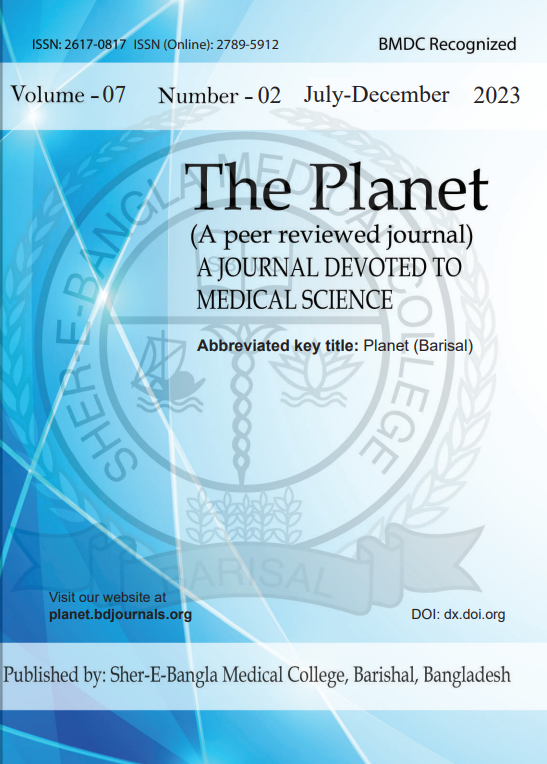Impact of Age and Socio-Economic Factors in doing EmergencyCaesarean Section — A Cross-Sectional Study
Published 14-12-2024
Keywords
- Emergency Caesarean Section, Age,
- Socio-Economic Status,
- Maternal Health,
- Prenatal Care,
- Health Disparities
- Bangladesh,
- Socio-Demographic Factors ...More
Copyright (c) 2024 The Planet

This work is licensed under a Creative Commons Attribution 4.0 International License.
How to Cite
Abstract
Introduction: Emergency Caesarean sections (C-sections) are essential in managing unforeseen childbirth complications, with rising global incidence influenced by socio-economic and demographic factors. In Bangladesh, the prevalence of emergency C-sections is a concern, with age and socio-economic status significantly impacting maternal health outcomes. Addressing these disparities is critical for improving maternal care. Methods & Materials: A cross-sectional study was conducted from January to June 2023, involving 100 women who underwent emergency C-sections at a hospital in Bangladesh. Participants were divided into five age groups (<20, 20-24, 25-29, 30-34, ≥35 years) and three socio-economic classes (Lower, Middle, Upper). Data from structured interviews and hospital records included socio-demographic details, prenatal care access, and clinical indications. Descriptive statistics and chi-square tests analyzed the data. Results: The 25-29 years age group (37%) was the most represented, with 58% of participants from the lower socio-economic class. Emergency C-sections constituted 70% of all C-sections, primarily due to fetal distress, prolonged labor, and severe preeclampsia. Lower socio-economic status correlated significantly with higher emergency C-section incidence, particularly among younger women. The upper socio-economic class exhibited the lowest incidence, attributed to better prenatal care access. Conclusion: Socio-economic status and age significantly influence emergency C-section rates in Bangladesh. Younger women from lower socio-economic backgrounds face heightened risks due to inadequate prenatal care access. Interventions to improve health literacy, expand prenatal care, and reduce socio-economic disparities are crucial for lowering emergency C-section rates and enhancing maternal health outcomes.



